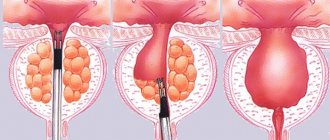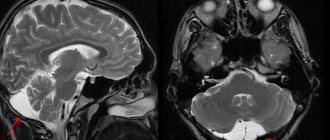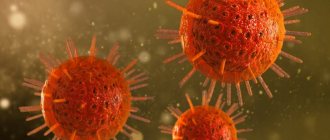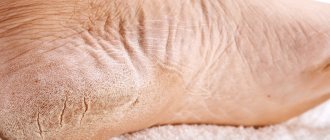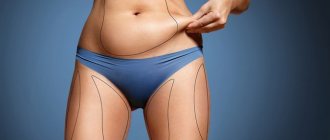Inguinal candidiasis is more often diagnosed in men than in women. The pathology belongs to the category of candidiasis of large folds and is characterized by severe symptoms, causing the patient discomfort and many unpleasant symptoms. The main cause of fungal disease is a decrease in the body’s protective functions under the influence of negative internal and external factors. Treatment of inguinal candidiasis should be carried out under the strict supervision of a physician. An important point is to identify the root cause that provoked the spread of fungal infection. Without its elimination, the risk of the disease progressing to the chronic stage, which is manifested by periodic relapses, increases. Medical specialists quickly diagnose the pathology and prescribe the most effective treatment, taking into account the individual characteristics of the patient’s body. Our doctors pay enough attention to each client to achieve the most positive therapeutic results and prevent complications.
Symptomatic picture of mycosis
Candidiasis of the inguinal folds is caused by specific fungi, which are opportunistic microorganisms that live on the skin and mucous membranes of any healthy person. The immune system, functioning without failures, suppresses the active activity of pathogenic microflora, so they remain in a latent state in the human body. However, under the influence of pathological exogenous and endogenous factors, the immune system is weakened and ceases to fully perform its functions. This contributes to the activation of the infection and its unhindered reproduction.
The active activity of a fungal pathogen on the skin in the groin area is manifested by the following pathological symptoms:
- Formation of spots in the groin. The lesions have clear boundaries and differ in color from healthy areas. The shade of the spots ranges from light pink to deep red.
- Peeling of the skin. In places where a fungal infection is localized, the skin becomes covered with a white coating and peels off. Peeling may spread to the perianal and pubic areas, as well as to the folds of skin between the groin and thigh.
- Uncomfortable sensations. In the groin area, the patient is bothered by severe, sometimes unbearable itching, which can cover the femoral part of the lower limb.
- Irritation. Swelling, redness, and irritation form at the site of active fungal activity.
On the skin of the groin area affected by the fungus, round, deformed areas are visualized, which differ from healthy skin in shade and the presence of peeling on the surface. Thanks to such visual signs, the doctor can make a preliminary diagnosis, which will be confirmed by the results of a comprehensive diagnostic examination.
Calling a dermatologist at home for a rash in the groin
Not everyone has the opportunity to personally visit a doctor in our clinic if they develop rashes in the groin area. In such situations, a dermatologist is called to your home.
You can use the service in any of the most convenient ways:
- Call one of the specified clinic phone numbers with a brief description of the symptoms of the disease that has arisen. The dermatologist will visit the patient on the same day of treatment, excluding holidays and weekends.
- Filling out an electronic application on the official website of our medical center. To do this, you need to provide all the necessary information in special fields in the online application form. The dispatcher will contact the patient as soon as possible using the phone number provided to confirm the most convenient time for the doctor’s visit.
- Registration entry. This calling method may be required by patients who have a follow-up appointment but no longer wish to attend the clinic due to lack of time or other personal reasons. By contacting the registrar, you will need to briefly describe the situation and agree on the date, address and time of the dermatologist’s visit.
When choosing any type of treatment, you should be prepared to provide certain personal information. All personal data of patients is kept in strict confidentiality.
Athlete's inguinal
The disease is caused by fungi of the genus Epidermophyton floccosum. The infection is transmitted through household contact and most often affects men. Factors that provoke the development of the disease include:
- wearing tight, constricting clothing that disrupts natural air exchange in the groin area;
- profuse sweating;
- increased environmental humidity;
- frequent injury to the skin in the groin;
- inactive lifestyle;
- excess weight.
In the initial stages of development, the infection is localized in the skin folds of the genital area, but as it progresses it spreads to the upper part of the inner thigh, affecting both limbs. Usually the fungus does not affect the skin of the scrotum.
The rash has a scaly, pinkish border. Inguinal athlete's foot is often accompanied by itching and pain symptoms. Lack of timely treatment leads to an increase in lesions and the spread of infection to healthy tissue.
To prevent the development of inguinal athlete's foot, it is advisable to follow simple rules of prevention:
- wear comfortable underwear made from natural fabric;
- observe the rules of personal hygiene, especially in saunas and swimming pools;
- use personal hygiene items and do not give them to any strangers;
- normalize body weight;
- add moderate physical activity;
- If you have characteristic symptoms of a fungal infection, do not self-medicate, but make an appointment with a dermatologist as soon as possible.
Cream or soap: how to properly care for the skin in intimate places?
- Use only special cosmetics for delicate intimate care. It contains natural ingredients, does not cause allergic reactions and is suitable for gentle cleansing of delicate areas. The composition of GINOCOMFORT washing gels corresponds to modern recommendations of gynecologists - GINOCOMFORT intimate cosmetics are not only suitable for daily care, but also help to maintain the cleanliness of the genitals during menstruation and during the treatment of gynecological diseases, when the body is especially vulnerable.
- If possible, wear comfortable underwear made from natural fabrics. If you want to wear erotic panties, be sure to take a shower before putting on such panties, and also change your underwear before going to bed - sleeping in thongs can increase the level of pathogenic bacteria in the vagina.
- Maintain personal hygiene: obstetricians-gynecologists recommend washing yourself 1-2 times a day, during menstruation up to 4 times a day, if possible, with each pad change.
Pads and tampons should be changed every 3-4 hours, regardless of the amount of discharge. - Pay attention to contraception: if you are allergic to latex, choose condoms made from other materials.
- Visit your obstetrician-gynecologist at least 2 times a year to rule out the development of diseases.
And remember: irritation in the intimate area, even if it just “itches” and there are no other more serious symptoms, is not the norm, and this condition is most often easy to eliminate.
There is no need to avoid the possibility of solving an unpleasant problem. The right cosmetics and treatment selected by an obstetrician-gynecologist will allow you to regain confidence in your beauty, comfort, feeling of freshness and good mood every day. Sources:
- Inflammatory diseases of the female genital organs. Modern perinatal technologies in strengthening the reproductive health of patients. Naumov I.A. // Monograph. Saarbrucken: LAP LAMBERT Academic Publishing GmbH end Co. KG. — 2011. — pp. 18–21.
- Microbiological characteristics of biotopes of the reproductive tract with endometritis. Glukhova E.V., Shakhovskaya I.N. // Togliatti honey. consultation – 2008. – 1 (2): pp. 38–44.
- Medical and social characteristics and forecasting of reproductive health of young women at the present stage. Torubarov S.F. // Social aspects of public health. – 2013. – 5 (33): P. 7.
- https://ciplamed.com/content/important-tips-to-maintain-intimate-hygiene
- https://www.lactacyd.eu/your-intimate-zone/
- https://www.medicalnewstoday.com/articles/321537.php
Candidiasis in the groin area
The causative agent of candidiasis in the groin area is a yeast-like fungus of the genus Candida, which belongs to the opportunistic microflora and lives on the skin and mucous membranes of every healthy person. With natural balance and proper functioning of the immune system, the infection is in a latent state and does not provoke the development of pathological processes. But as soon as the immune defense fails, the fungi are activated and begin to multiply unhindered, causing the formation of deformable surface changes, accompanied by pathological symptoms.
Common causes of candidiasis in the groin area are:
- obesity, accompanied by the appearance of large folds on the skin;
- endocrine, hormonal disorders;
- failure to comply with personal hygiene rules;
- uncontrolled use of certain groups of medications;
- unbalanced diet, predominance in the diet of foods containing large amounts of carbohydrates and sugar;
- infection through close contact with a carrier.
At the initial stage of development of inguinal candidiasis, the affected skin changes color to a darker one. Then the skin becomes covered with a small blistering rash. The spots have a clear outline. The areas where the blistering rash has formed begin to crack over time, forming erosions and ulcers. Injury is accompanied by unbearable itching and pain.
Fungi of the genus Candida produce a specific enzyme that accumulates in places of infection in the form of a thick, curdled mass. A whitish coating is a characteristic symptom of candidiasis and allows the dermatologist to differentiate the pathology. Treatment of candidiasis of the groin area must be carried out immediately, otherwise the disease will become chronic, accompanied by periodic exacerbations.
General information
Diaper rash (intertrigo) is a type of simple dermatitis that affects only the superficial layer of skin in the folds and bends of the skin.
Diaper rash in adults is most often localized in the armpits, under the mammary glands, in the folds of the abdomen, neck, perineum or in the intergluteal fold. This pathology develops in areas of skin friction and high humidity under the influence of the irritating influence of sweat, sebaceous secretions, urine or feces. A high incidence of intertrigo is observed in patients with obesity , diabetes mellitus and immunodeficiency conditions . Diaper rash occurs at any age, and in infants this skin lesion is considered a type of diaper dermatitis , since changes in the skin appear in the diaper area (diaper area) and are associated with the irritating effect of urine or feces.
Initially, in areas of profuse sweating, simple diaper rash occurs, and with insufficient care and constant friction, the areas of inflammation become infected with fungal or bacterial flora and there is a risk of developing streptococcal and candida infections, as well as dermatophytosis . If simple diaper rash goes away quickly when irritating factors are eliminated and drying and anti-inflammatory drugs are prescribed, then treatment of streptococcal and candidal intertrigo is sometimes a difficult task, since there is a risk of relapses and chronicity of the process.
Inguinal rubrophytosis
The infectious disease is caused by fungi of the genus Trichophyton rubrum. This is a fairly common type of mycosis, which is diagnosed in a third of the population. You can become infected with inguinal rubrophytosis from a carrier through bodily contact, clothing, and household items.
Common reasons for increased growth of fungal colonies are:
- excessive sweating;
- failure to comply with personal hygiene rules;
- regularly wearing tight, tight clothing, including underwear;
- hormonal and endocrine disorders;
- increased environmental humidity;
- uncontrolled use of certain groups of medications;
- obesity.
Inguinal rubrophytosis manifests itself in 2 forms:
- Erythematosquamous. It manifests itself in the formation of red spots on the skin that have an irregular shape with an intermittent border. On the surface of the affected skin, compactions and a blistering rash with liquid inside are noticeable.
- Follicular nodular. It develops when treatment of the erythematosquamous form is untimely. The follicular nodular form is characterized by the spread of infection to healthy areas of the body: buttocks, feet, forearm, hands, legs.
Inguinal rubrophytosis brings unbearable discomfort to the patient, causing severe itching, pain while walking and when in contact with clothing. If there is no therapy, the spots rapidly increase in size, spreading to healthy areas.
In terms of external signs, inguinal rubromycosis is similar to such common dermatological diseases as:
- eczema;
- psoriasis;
- candidiasis;
- erythrasmus.
To differentiate rubrotrophy, the doctor gives a referral for a comprehensive diagnosis, the results of which will help prescribe the correct and most effective treatment.
3. Symptoms and diagnosis
When visiting a doctor (gynecologist, urologist, dermatologist, andrologist) with complaints of itching in the perineum, the following symptoms are important:
- redness;
- painful irritation;
- changes in the appearance of the skin;
- the presence of pimples or large blisters (in particular, those that appear solely in response to scratching, washing, or blotting with a towel);
- the presence of similar lesions in other areas (or localization only in the perineum);
- dependence on any situations, sex life, food consumed, a certain area, etc.;
- increased or relieved itching in response to mechanical friction.
All these nuances, as well as the dynamics, cyclicity, and duration of itching, are diagnostically informative; they should be monitored in advance and reported to the doctor.
Depending on the results of the examination, study of complaints and anamnesis, laboratory and, if necessary, instrumental studies are prescribed (urine and blood tests, microscopy of smears and sections, iodine and allergy tests, ultrasound, cystoscopy, etc.). In some cases, consultation with specialized specialists (infectious disease specialist, parasitologist, endocrinologist, psychiatrist, proctologist, etc.) is necessary.
About our clinic Chistye Prudy metro station Medintercom page!
What treatment therapy should I use?
Before prescribing treatment for inguinal candidiasis, it is necessary to establish an accurate diagnosis and identify the pathogen. Therefore, after an initial examination and history taking, the doctor gives a referral for a comprehensive diagnostic examination, including the following procedures:
- microscopy;
- bacterial sowing;
- molecular biological analysis.
Treatment of candidiasis in the groin should be comprehensive and carried out under the strict supervision of a doctor. Self-medicating with such a disease is dangerous and fraught with serious complications.
The treatment plan includes the following activities:
- Identification and elimination of factors that provoke immunodeficiency.
- Prescription of antifungal and symptomatic therapy.
- General strengthening therapy.
To combat a fungal infection localized in the groin, local antifungal drugs are prescribed in the form of creams and ointments, which contain an antimycotic component. In the fight against fungi, drugs such as:
- "Nystatin";
- "Natamycin";
- "Clotrimazole".
If the disease is advanced and accompanied by serious complications, in addition to topical medications, antifungal medications are prescribed for oral administration in the form of capsules and tablets:
"Fluconazole";
"Itraconazole"
In the most advanced cases, the doctor will recommend intravenous or intramuscular administration of antimycotics. As soon as the condition improves, you can switch to tablets.
In case of correct treatment, the disease completely disappears within 7–10 days. To confirm complete recovery, repeat tests must be taken after completing the main course. If the fungal infection is completely eradicated, the laboratory test results will be negative.
In addition to drug treatment, it is important to follow preventive measures that enhance the therapeutic effect and reduce the risk of relapse to zero. Therefore, together with drug therapy, it is advisable to follow the following rules of prevention:
- strengthen immunity;
- lead a healthy, active lifestyle;
- get rid of bad habits;
- maintain personal hygiene;
- normalize weight;
- use products that control sweat in large folds.
If there is no treatment for inguinal candidiasis, the fungal infection will gradually spread throughout the body, causing health and life-threatening complications. Therefore, if you have suspicious symptoms, you must make an appointment with a dermatovenerologist, take all tests and be treated under the supervision of a specialist.
In children
Diaper rash is a common pathology of newborns. At birth, the baby's skin is not mature enough and reaches functional maturity during the first year. Children's acidity levels, lipid levels and skin saturation with water are constantly changing, so proper care of the baby's skin is important.
Risk factors for diaper dermatitis are:
- increased trauma to the diaper area;
- increased skin moisture in these places;
- high skin pH;
- excessive wrapping;
- skin contamination with feces;
- poor hygiene care.
Prolonged stay in diapers leads to excessive hydration of the skin, loosening of the stratum corneum and the appearance of inflammation. Areas of the skin turn red, swell, a small rash appears, itching and burning. If the newborn's hygiene is not maintained, the process progresses: the intensity of redness and the affected area increase, cracks appear in the folds and an infection caused by staphylococcus, enterococcus or Candida occurs. Blisters, pustules and crusts appear in the affected areas.
Treatment for mild diaper rash includes:
- Frequent diaper changes (for newborns every 2 hours, and for infants from 1 month - every 3.5-4 hours.
- Bath babies regularly and dry folds thoroughly.
- Frequent and prolonged skin contact with air.
- Treatment of folds with powder and ointment/cream D-Panthenol . D-Panthenol cream forms a protective barrier to various irritants and has an anti-inflammatory effect. It should be used at every diaper change to treat and prevent mild to moderate diaper rash.
- The use of products containing zinc oxide ( Sudocrem , Zincoderm baby , Bübchen , Desitin ).
In severe forms, complex treatment is used: antifungal agents, local antibacterial drugs and glucocorticoids, which should be recommended by a doctor.
Baths for diaper rash.
For skin rashes, medicinal herbal baths are quite effective. This treatment method tones the body well and promotes relaxation, and also leads to improved blood circulation. Method of preparation: you will need 50 grams of oak bark and string , add 1 liter of water and boil for 10 minutes. Then you need to strain and cool the broth, add it to a bath with warm water.
Pharmaceutical chamomile is also suitable for such therapy. You will need 1 tablespoon of flowers, which needs to be filled with half a liter of hot water. Let it brew for 40 minutes and add to the bath.
Yarrow perfectly eliminates flaking and inflammation, and also helps reduce itching. Take 1 kilogram of herb, fill it with 3 liters of water and leave for 15-20 minutes. Afterwards, you can pour the resulting tincture into the bath.
Intertriginous dermatitis: forms
- "Widespread." This form of the disease is called seborrheic dermatitis. In cases of this type of disease, diaper rash spreads from the gluteal region to the armpits.
- "Psoriasiform." This type of dermatitis is characterized by peeling skin.
- "Granulomatous". This dermatitis is often caused by a weakened immune system, and it has distinctive features in the form of brown rashes on the skin.
- "Herpetiform." This type of dermatitis is characterized by the appearance of blisters on the body.
Only a qualified dermatologist can diagnose intertriginous dermatitis. When making a diagnosis, a medical professional must conduct a distinctive diagnosis with diseases such as psoriasis, athlete's foot and eczema.
Prevention
For patients prone to excessive sweating and diaper rash, it is important to follow the following recommendations:
- Dress according to the season, do not wear tight underwear and avoid synthetic clothing.
- During the hot season, work in an air-conditioned room.
- Follow hygiene procedures daily, dry the folds thoroughly, wipe with salicylic alcohol and powder them with a mixture of talc and zinc oxide .
- After bowel movements and urination (involuntary and natural), wash the skin folds.
- Take frequent air baths (lie with your arms up, legs out, place rollers between your fingers, thus spreading your fingers).
- Bedridden patients often change their underwear (bed and underwear) to dry ones.
- In case of candidiasis of the skin, bedding and underwear should be disinfected by boiling.
List of sources
- Samtsov A.V., Sukharev A.V., Nazarov R.N., Bondar O.I., Patrushev A.V., Fedotova M.A. The effectiveness of Pimafukort cream in the treatment of patients with intertrigo of fungal etiology / Russian Journal of Skin and Venereal Diseases. 2011;14(4):42-46.
- Dermatovenereology: National manual edited by prof. Yu.S. Butova //Moscow. "Geotar-Media", 2014, p. 886.
- Nosonova A.V. Complex differentiated therapy of patients with infections of large skin folds using etiotropic drugs and immunomodulators / Dermatovenerology. Cosmetology. Sexopathology. — 2012.— No. 1-4.— P. 297-302.
- Skripkin Yu. K. et al. Skin and venereal diseases: A guide for doctors. – M., 2001. – P. 4-13
- Gorlanov I. A., Zaslavsky D. V., Leina L. M. Skin diseases associated with obesity / Bulletin of Dermatology and Venereology. - 2016. - No. 6, pp. 20-26.
